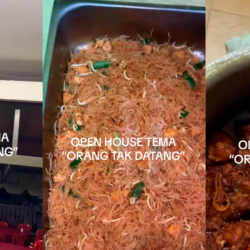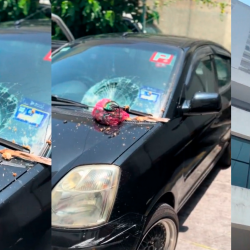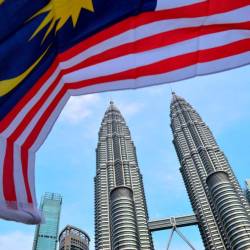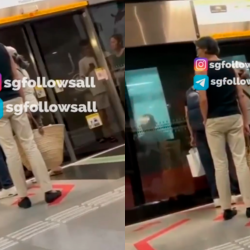FEATURE-Far from home, refugees build digital heritage with virtual reality
By Rina Chandran
Sept 24 (Thomson Reuters Foundation) - Growing up, Naseem Badar heard stories from her parents, uncles and aunts of how they fled for their lives from their village in northern India amidst bloody riots during the Partition and made their way to the newly created country of Pakistan.
The Partition in 1947, following India's independence from British rule, triggered one of the biggest forced migrations in history, uprooting more than 12 million people and killing more than one million.
For Badar, who lives in London and has never visited India, it was hard to picture her family in Roopnagar in Punjab state, until she saw a virtual reality film made by non-profit Project Dastaan, which documents accounts of Partition survivors.
"They had very vivid memories of the village and their homes - a certain tree, the lake, the mosques. Project Dastaan was able to find these places and film them, and it was a very emotional experience for my family to see them again," she said.
"They were traumatised by the Partition and suffered a great deal, but the film brought a smile to their faces. It is important to preserve these memories because it is a big part of their lives and of South Asia's history," she added.
Badar's family is among the 75 Partition survivors that Project Dastaan - meaning story in Urdu - aims to reconnect with their childhood homes through VR and other technologies, using volunteers in India and Pakistan to track down and film places.
A record 79.5 million people were displaced globally at the end of 2019, with very few able to return home, according to the United Nations' refugee agency (UNHCR).
Migrants and refugees can easily become "mere statistics", so it is important to preserve their stories, said Sparsh Ahuja, founder of Project Dastaan, which is backed by Oxford University and counts among its advisors Nobel Laureate Malala Yousufzai, who herself left Pakistan after a violent attack in 2012.
"History should always be documented, so that we learn from it, and prevent tragic events from repeating," said Ahuja, whose grandfather migrated to India from Pakistan as a seven-year-old.
"VR is described as an "empathy machine" - it will not heal the trauma they suffered, but it is the closest they can get to returning to the homes they could never return to," he told the Thomson Reuters Foundation.
FABRIC OF SOCIETY
Virtual reality was initially tied to computer gaming when it became popular in the 1990s. But as the technology advanced, its immersive quality found many other uses, from fighting human trafficking to curbing dementia.
Its application in documenting the lives of refugees includes a 2017 installation by filmmaker Alejandro Gonzalez Inarritu of Mexican and Central American immigrants and refugees trying to get to the United States.
Adrian Evans, a lecturer in archaeological and forensic sciences at England's University of Bradford, began to use VR while working in Jordan near the Azraq camp, which held more than 35,000 Syrian refugees, about a fifth of them children.
The Building Resilience Through Heritage (BReaTHe) project uses VR to create a "digital heritage" that can boost refugee resilience and wellbeing, and help the host community better understand their hardship, he said.
"VR provides a level of immersion and engagement that cannot be had from more traditional approaches," Evans said.
"VR captivates individuals, takes them back to their homeland in a way that immediately brings out very personal thoughts and experiences," he added.
For the younger generation who only know Syria in war, VR — along with other mediums such as music, dance, food and photographs - can create a connection to their ancestral homeland, and strengthen bonds with older generations, he said.
"Heritage should be valued. It is the fabric of society."
LIKE FAMILY
Technology has supported those who have been forced from their homes because of violence, war and natural disasters in many ways.
Smartphones have helped map remote areas, monitor abandoned homes from afar, and prove ownership through so-called digital trails.
For Project Dastaan's volunteers, who have little to go by but an elderly survivor's account, it can be hard to locate homes.
"Places have changed massively in the past 70 years, but something survives - a temple, a tree, a mosque, someone who remembers the family," said Ahuja.
The places are filmed, then edited into six-minute experiences that are showed to the survivors.
Projects like these are urgently needed as survivors age and their memories are lost, said Fatima Zara Ali, whose family migrated to Pakistan, then to Scotland after the Partition.
"Before we know it, there will be no witnesses to recount the tales of the Partition, no one to recall how it impacted the lives of so many," said Ali, adding that her knowledge of the Partition came from her family, and not her school books.
While Project Dastaan had aimed to reconnect 75 Partition witnesses with their ancestral homes before the 75th anniversary in 2022, restrictions due to the coronavirus have meant that it expects to complete about 30 virtual returns by then.
Like Zarina Akram Chaudhry, who was 13 years old when she and her family fled on a crowded train from Firozpur in India's Punjab state.
They witnessed horrific attacks, but Chaudhry still remembers her childhood in India fondly.
"We lived in a big house, and had many Hindu neighbours. We all played together, ate together, celebrated all festivals together like a big family," said Chaudhry, speaking on a video call from her daughter's home in Lahore.
"I could never go back to see the house, the village. I would like to see them again," she said. (Reporting by Rina Chandran @rinachandran; Editing by Zoe Tabary. Please credit the Thomson Reuters Foundation, the charitable arm of Thomson Reuters, that covers the lives of people around the world who struggle to live freely or fairly. Visit http://news.trust.org)






